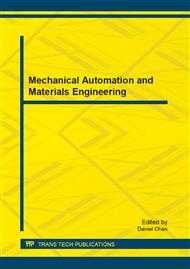p.716
p.721
p.727
p.737
p.742
p.749
p.754
p.760
p.765
A Study on Early Apoptosis of Hepatoma Bel-7402 Cells In Vitro Treated by Altering-Electric Magnetic Field Exposure of Extremely Low Frequency Combined with Magnetic Nano-Fe3O4 Powders
Abstract:
An investigation was made on the early apoptosis of hepatoma Bel-7402 cells, which were cultured on the magnetic nanoFe3O4 powders in different diameters (MNPs) in vitro, by an altering electro-magnetic field (ELFF) exposure of extremely low frequency. MNPs would strengthen the ELFF effects on the cell metabolism, and the effects were dependent on the diameter of powders. The experiments showed that MNPs could not influence the cell physiology obviously. However, ELFF exposure would inhibit the cell proliferation because some cells were arrested at G0/G1 period and the early apoptosis was induced with significant difference (P<0.05) as compared with the control group. The combination of MNPs with ELFF could strengthen the ratio of cells arrested at G0/G1 period and induced early apoptosis. As compared with the control group and the radiation group by ELFF with effects to cells ion metabolism, the significant difference was also present (P<0.05). The western-blot and patch-clamp experiments showed that the mechanism on the combined method was the same as that of the single ELFF exposure and treated by 40nm MNPs could be induced more cells into early apoptosis than those by the 80nm powders combined with ELFF.
Info:
Periodical:
Pages:
742-748
Citation:
Online since:
August 2013
Authors:
Price:
Сopyright:
© 2013 Trans Tech Publications Ltd. All Rights Reserved
Share:
Citation:


